Playlist: Michele Jansen's Portfolio

Featured
Yulestride (Butch Thompson's Jazz Originals)
From KBEM | Part of the Jazz Originals series | 57:48
Live performance of Butch Thompson's holiday show.
- Playing
- Yulestride (Butch Thompson's Jazz Originals)
- From
- KBEM
 One of the top pre-bop pianists to be active during the past 30 years, Butch Thompson's piano playing stretches from Jelly Roll Morton and James P. Johnson to swing; he is also an excellent (if occasional) New Orleans-style clarinetist. In 1962, he joined the Hall Brothers New Orleans Jazz Band in Minneapolis, an association that lasted over 20 years. This concert features solo jazz piano versions of all your holiday favorites recorded before a live audience at McPhail Center for Music.
One of the top pre-bop pianists to be active during the past 30 years, Butch Thompson's piano playing stretches from Jelly Roll Morton and James P. Johnson to swing; he is also an excellent (if occasional) New Orleans-style clarinetist. In 1962, he joined the Hall Brothers New Orleans Jazz Band in Minneapolis, an association that lasted over 20 years. This concert features solo jazz piano versions of all your holiday favorites recorded before a live audience at McPhail Center for Music.
Battle of the Big Bands
From KBEM | Part of the Big Band Scene series | 57:58
This concert features two Minnesota big bands, battling it out on stage:Acme Jazz Company, directed by Doug Rasmussen,
vs Nova Jazz Orchestra, directed by Mike Krikava, both professional Big Bands, comprised of many local music educators.
- Playing
- Battle of the Big Bands
- From
- KBEM

BIG BAND SCENE - featuring Big Bands of today from across the world, a bi-weekly radio show on Jazz 88, hosted by Jerry Swanberg and produced by Ed Jones, has been on the air since April of 1999. Big Bands from the United States, Canada, Europe, Japan and Australia are featured, including Regional Big Bands from virtually every state in the union. Jerry plays big band music from the major cities for big band activity in the US, including LA, NYC, Chicago, San Francisco, Seattle, Boston, Philadelphia, Kansas City, Detroit, Portland, Nashville, Toronto & Denver and the states of Florida, New Jersey, Texas, Ohio, Wisconsin, Nevada and Indiana. Jazz Ensembles from the Military and Universities are also featured. Also spotlighted are big bands from around the world including Europe (Sweden, Germany, Holland, England, Denmark, France, Belgium, Austria, Italy, Finland, & Norway), Canada (Toronto, Montreal, Winnipeg & Vancouver), Japan, Australia, and New Zealand.
Butch Thompson's Yulestride 2011
From KBEM | 58:57
Live performance of the 2011 edition of pianist Butch Thompson's "Yulestride" show at MacPhail Center for Music in Minneapolis.
- Playing
- Butch Thompson's Yulestride 2011
- From
- KBEM

In this year's edition of his annual "Yulestride" show, recorded at MacPhail Center for Music in Minneapolis on December 11th, 2011, pianist Butch Thompson presents his unique take on the traditional holiday repertoire, tells us a few stories about his childhood in Marine on St. Croix, Minnesota, and presents Santa Claus in his only Twin Cities appearance this season as a jazz cornetist.
The Jazz Image Special Edition: Episode 1, Count Basie
From KBEM | Part of the The Jazz Image Special Edition series | 04:59
Legendary jazz broadcaster Leigh Kamman interviewed many jazz luminaries over the years. On this episode, Leigh talks with Count Basie backstage at Freddie's Cafe in Minneapolis, probably recorded in the summer of 1961.
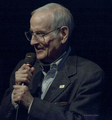
During his 60 years in jazz broadcasting, Leigh Kamman conducted hundreds of interviews with jazz artists, including some of jazz's illustrious figures. In the early years, these were recorded on magnetic tape. Now, these treasures have been lovingly preserved and edited into a new series of broadcasts, The Jazz Image: Special Edition . These recordings preserve priceless conversation Leigh Kamman had with such luminaries as Duke Ellington, Sarah Vaughan and Stan Kenton. In his ninth decade, Kamman adds fresh commentary to round out these 5 minute broadcasts, 13 in all in this series.
Steve Wiese, the brilliant recording engineer behind Creation Audio, used his expertise to transfer material from aging and deteriorating reel-to-reel tapes, "baking" them to keep them in tact and repairing countless old splices that kept breaking during playback. Steve Blons, local jazz guitarist and former co-producer of the KBEM-FM series Jazz and the Spirit , selected and edited the interviews for broadcast, recorded new conversations with Leigh Kamman, and produced the series. Leigh provided the anecdotes and recollections. His daughter Kathy Vye helped Leigh sort through his collection and watched over everything, especially over Leigh himself. This work of restoration, archiving and cataloging Leigh Kamman's interviews, as well as the production of this new broadcast series, was made possible with a grant from the Minnesota Arts and Cultural Heritage Fund.
The Jazz Image Special Edition: Episode 6, Lionel Hampton
From KBEM | Part of the The Jazz Image Special Edition series | 04:57
Leigh catches up with Lionel Hampton at the Apollo Theater, and asks him about some of the younger players in his band, including a young horn player by the name of Quincy Jones.

Minnesota jazz broadcasting legend Leigh Kamman conducted hundreds of interviews with jazz artists, including some of jazz's illustrious figures. Now, these treasures have been lovingly preserved and edited into a new series of broadcasts, The Jazz Image: Special Edition. These recordings preserve priceless conversation Leigh Kamman had with such luminaries as Duke Ellington, Sarah Vaughan and Stan Kenton. In his ninth decade, Kamman adds fresh commentary to round out these 5 minute broadcasts, 13 in all in this series.
Steve Wiese, the brilliant recording engineer behind Creation Audio, used his expertise to transfer material from aging and deteriorating reel-to-reel tapes, "baking" them to keep them in tact and repairing countless old splices that kept breaking during playback. Steve Blons, local jazz guitarist and former co-producer of the KBEM-FM series Jazz and the Spirit, selected and edited the interviews for broadcast, recorded new conversations with Leigh Kamman, and produced the series. Leigh provided the anecdotes and recollections. His daughter Kathy Vye helped Leigh sort through his collection and watched over everything, especially over Leigh himself. This work of restoration, archiving and cataloging Leigh Kamman's interviews, as well as the production of this new broadcast series, was made possible with a grant from the Minnesota Arts and Cultural Heritage Fund.
Minnesota Creates: Matt Sciple
From KBEM | Part of the Minnesota Creates series | 03:30
Director, actor and playwright Matt Sciple has been a regular on Minnesota stages since arriving in the Twin Cities from Louisiana in 1990. In 2007 he was named City Page’s Artist of the Year. Susan Spongberg asked Matt how he finds his way to bring a play alive with his own distinct vision.
- Playing
- Minnesota Creates: Matt Sciple
- From
- KBEM

Minnesota Creates is curious about how creativity occurs, so Susan Spongberg asked an assortment of Minnesota artists how do you choreography a dance? Where do your novel’s characters come from? How do you decide what to paint?
What moves you to write a poem? How do you decide what to film? What comes first, the lyrics or the melody? Minnesota Creates is curious about how creativity occurs, so Susan Spongberg asked an assortment of Minnesota artists (Drew Jansen, Kevin Kling, Heidi Fellner and more) how do you choreography a dance? Where do your novel’s characters come from? How do you decide what to paint?
Blues, Rags, and Stomps: Homage to the Emporium of Jazz
From KBEM | 58:40
Butch Thompson and friends perform live at The Cedar Cultural Center. It was a celebration of the well-remembered Hall Brothers Jazz Band, and its long run at the Emporium of Jazz in Mendota.
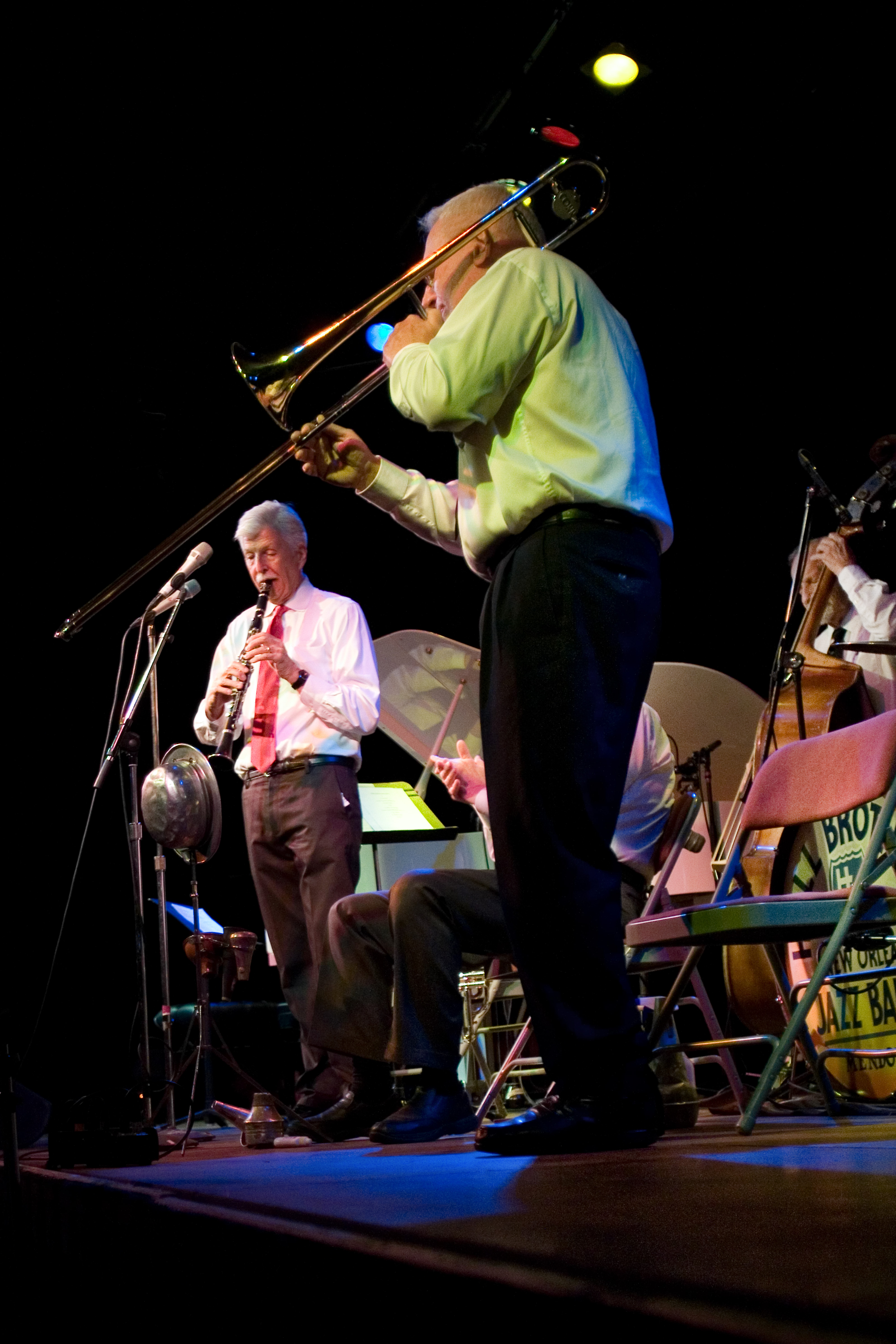 KBEM presents a celebration of the well-remembered Hall Brothers Jazz Band, and its long run at the Emporium of Jazz in Mendota. Much of the original band was on hand that night at The Cedar Cultural Center. Founded in 1958, the band had a mission: Rehearse and play classic New Orleans Jazz. Butch Thompson took over the clarinet chair in 1962. The Emporium of Jazz opened in 1966, and the doors finally closed in 1991. The formula was simple: The "Emp", as many people called it, was a place to listen and dance and was an important tour stop for the top names in traditional jazz.
KBEM presents a celebration of the well-remembered Hall Brothers Jazz Band, and its long run at the Emporium of Jazz in Mendota. Much of the original band was on hand that night at The Cedar Cultural Center. Founded in 1958, the band had a mission: Rehearse and play classic New Orleans Jazz. Butch Thompson took over the clarinet chair in 1962. The Emporium of Jazz opened in 1966, and the doors finally closed in 1991. The formula was simple: The "Emp", as many people called it, was a place to listen and dance and was an important tour stop for the top names in traditional jazz.
Native Roots of Jazz: Charles Mingus
From KBEM | Part of the Native Roots of Jazz series | 05:00
Bassist, composer and big band leader Charles Mingus claimed Native American roots, and he incorporated many genres of music into his compositions.
- Playing
- Native Roots of Jazz: Charles Mingus
- From
- KBEM
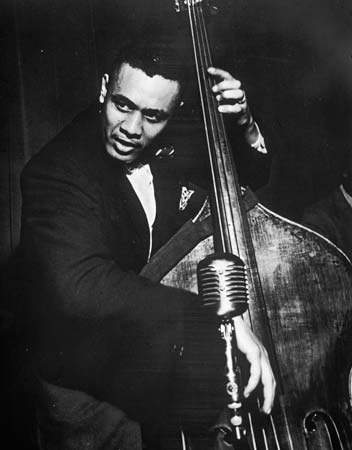 Charles Mingus was one of many great jazz musicians to claim Native American roots. A bassist, composer and big band leader, the number of his jazz compositions is second only to Duke Ellington. His compositions favored complex rhythms, dissonant harmonies, and a mix of structure and free improvisation.
Charles Mingus was one of many great jazz musicians to claim Native American roots. A bassist, composer and big band leader, the number of his jazz compositions is second only to Duke Ellington. His compositions favored complex rhythms, dissonant harmonies, and a mix of structure and free improvisation.
Native Roots of Jazz: Dave Brubeck
From KBEM | Part of the Native Roots of Jazz series | 05:00
Dave Brubeck, whose father was of Medoc descent, was one of the most active and popular jazz musicians in the world. His experiments with odd time signatures, improvised counterpoint, and a distinctive harmonic approach were the hallmarks of his unique musical style.
- Playing
- Native Roots of Jazz: Dave Brubeck
- From
- KBEM
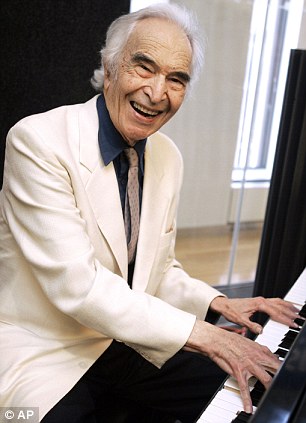
Dave Brubeck, whose father was of Medoc descent, was one of the most active and popular jazz musicians in the world. His experiments with odd time signatures, improvised counterpoint, and a distinctive harmonic approach were the hallmarks of his unique musical style.
In 1959, the Dave Brubeck Quartet popularized jazz with the group's most memorable tune “Take Five” – making “Time Out” the first jazz album to sell a million copies.
Brubeck's popularity and musical acumen gained him recognition throughout his career.
In 1954 he became the first jazz artist to grace the cover of Time magazine. He was named a National Endowment of the Arts Jazz Master in 1999 and was declared a "Living Legend" by the Library of Congress in 2003.
Native Roots of Jazz: Ornette Coleman
From KBEM | Part of the Native Roots of Jazz series | 05:00
Ornette Coleman, whose family ties reach back to the Occaneechee Tribe of North Carolina, was largely self-taught. His music has weathered the test of time and his influence was acknowledged time and again.
- Playing
- Native Roots of Jazz: Ornette Coleman
- From
- KBEM
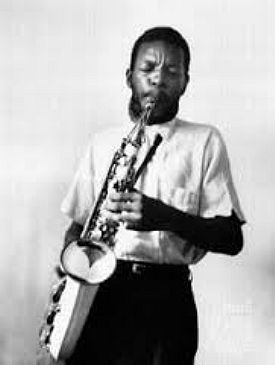 Revolutionaries are looked upon with disdain by the establishment they seek to change. Such is the case of Ornette Coleman when he challenged the harmonic and rhythmic constraints imposed by bebop and created "The New Thing"-free jazz.
Revolutionaries are looked upon with disdain by the establishment they seek to change. Such is the case of Ornette Coleman when he challenged the harmonic and rhythmic constraints imposed by bebop and created "The New Thing"-free jazz.
Coleman, whose family ties reach back to the Occaneechee Tribe of North Carolina, was largely self-taught. He developed a natural approach to music, favoring tonal expression over technical proficiency. With an unconventional approach to intonation, harmony and phrasing, Coleman was publically dismissed by many as an incompetent chalratan. But others saw him as a true visionary who was changing the shape of jazz. And that he did. His music has weathered the test of time and his influence was acknowledged time and again.
Native Roots of Jazz: Don Cherry
From KBEM | Part of the Native Roots of Jazz series | 05:00
Don Cherry, of Choctaw ancestry, was one of the most lyrical and unique voices in jazz. Emphasizing expression and musical communication over speed and technical prowess, Cherry developed a distinctive sound and style on coronet and pocket trumpet.
- Playing
- Native Roots of Jazz: Don Cherry
- From
- KBEM

Playing alongside Ornette Coleman, Don Cherry was instrumental in the development of both avant-garde and free jazz; epitomized by the albums “The Shape of Things to Come” and “Free Jazz: A Collective Improvisation.”
In the 1970s he became a pioneer of world fusion music, incorporating Middle Eastern, African and Indian instruments and music in his playing. Cherry paid tribute to his Native roots by playing a Native American flute on the title track of Blue Lake, which he recorded in 1971.
Native Roots of Jazz: Don Cherry
From KBEM | Part of the Native Roots of Jazz series | 05:00
Don Cherry, of Choctaw ancestry, was one of the most lyrical and unique voices in jazz. Emphasizing expression and musical communication over speed and technical prowess, Cherry developed a distinctive sound and style on coronet and pocket trumpet.
- Playing
- Native Roots of Jazz: Don Cherry
- From
- KBEM

Playing alongside Ornette Coleman, Don Cherry was instrumental in the development of both avant-garde and free jazz; epitomized by the albums “The Shape of Things to Come” and “Free Jazz: A Collective Improvisation.”
In the 1970s he became a pioneer of world fusion music, incorporating Middle Eastern, African and Indian instruments and music in his playing. Cherry paid tribute to his Native roots by playing a Native American flute on the title track of Blue Lake, which he recorded in 1971.
Native Roots of Jazz: Miles Davis
From KBEM | Part of the Native Roots of Jazz series | 05:00
Widely considered one of the most influential and consistently innovative musicians of the 20th century, Miles Davis (of Cherokee ancestry) pointed jazz in new directions throughout his career.
- Playing
- Native Roots of Jazz: Miles Davis
- From
- KBEM
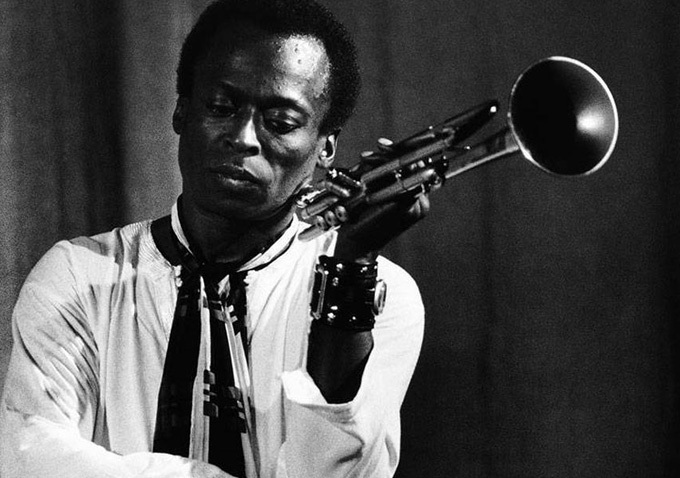
Miles Davis, of Cherokee ancestry, cut his teeth on bebop, playing with the likes of Charlie Parker, and quickly moved on to headline his own groups, becoming a major influence in almost every sub-genre of jazz.
Davis helped define cool jazz with the release of “Birth of the Cool” and instigated hard bop with the more rhythmic and emotional music of "Walkin'".
He moved on to explore modal jazz with “Milestones” and “Kind of Blue” (which has sold more copies that any other jazz album).
He extended the boundaries of post bop jazz with “Nefertiti” and “Sorcerer” and popularized jazz fusion with “In a Silent Way” and “Bitches Brew.”
Up until his death, Davis continued to stretch the boundaries of jazz – exploring the union of jazz and hip-hop with his final studio recording, “Doo-Bop.”
Native Roots of Jazz: Duke Ellington
From KBEM | Part of the Native Roots of Jazz series | 05:00
Duke Ellington (whose maternal grandmother was Cherokee) is regarded by many as the most influential composer in the history of jazz. And, as head of his own Orchestra for nearly 50 years, one of the most successful band leaders of all time.
- Playing
- Native Roots of Jazz: Duke Ellington
- From
- KBEM

From his “jungle-style” music of the 1930's to his jazz-style sacred-music of the 1970's, Duke Ellington was responsible for many innovations throughout his lifetime.
By grouping instruments from different sections of the band together, Ellington created new harmonies that blended his musicians' individual sound.
His blues writing resulted in new conceptions of form, harmony, and melody.
Ellington composed over 2,000 tunes. Many became jazz standards and many were written specifically to showcase the talents of his bandmembers.
Native Roots of Jazz: Dizzy Gillespie
From KBEM | Part of the Native Roots of Jazz series | 05:00
Dizzy Gillespie (of Cheraw descent), was one of the most influential players in the history of jazz. He was named a National Endowment of the Arts Jazz Master in 1982.
- Playing
- Native Roots of Jazz: Dizzy Gillespie
- From
- KBEM

Along with Charlie Parker, Dizzy Gillespie defined bebop; transforming jazz from dance to listening music. Gillespie was a complex player and harmonically he was ahead of everyone in the 1940s, including Parker. His precisely articulated rhythms and dissonance influenced the future of jazz.
Through his collaborations with Cuban percussionist Chano Pozo, Gillespie helped popularize Latin jazz. Infusing jazz with Afro-Cuban rhythms, their tune “Manteca” is often regarded as the quintessential representation of Latin jazz.
Native Roots of Jazz: Illinois Jacquet
From KBEM | Part of the Native Roots of Jazz series | 05:00
Jean Baptiste Jacquet is better known by his nickname, Illinois, which was given to him by his Sioux mother and comes from the Indian word “Illiniwek,” meaning superior men.
- Playing
- Native Roots of Jazz: Illinois Jacquet
- From
- KBEM
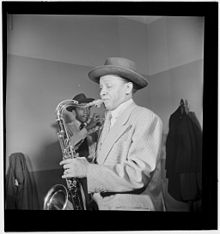
Illinois Jacquet became internationally known for his solo on Lionel Hampton's 1942 recording of "Flying Home". His solo was so powerful that it became part of the tune itself. Sonny Rollins commented that anyone who played “Flying Home” had to learn Jacquet's solo, note for note.
Jacquet is also noted for developing an entirely new style and sound for the tenor sax. With an innovational use of harmonics and false fingering he expanded the upper register of the tenor saxophone by two and a half octaves. And by contrasting the resulting stratospheric notes with sudden punctuations from the lowest notes on the horn, he created the formula for what evolved into Rhythm and Blues and Rock and Roll.
Native Roots of Jazz: John Lewis
From KBEM | Part of the Native Roots of Jazz series | 05:00
John Lewis was of Cherokee and Comanche lineage and is best known as the musical director and leader of the Modern Jazz Quartet.
- Playing
- Native Roots of Jazz: John Lewis
- From
- KBEM

Being classically trained, John Lewis' piano style was different from that of most of his contemporaries. As a soloist he depended as much on space and silence as he did on notes to get his message across; and as an accompanist he was likely to play fuguelike counter lines rather than the staccato chords that were standard bebop procedure.
Lewis' favorite form was the fugue, and his compositions commonly combined the element of classical form with collective improvisation.
Native Roots of Jazz: Charles Lloyd
From KBEM | Part of the Native Roots of Jazz series | 05:00
Program notes for the 2015 National Endowment of the Arts Jazz Master Awards Ceremony describe Charles Lloyd as “one of the key figures in the expansion and furthering of the art form.”
- Playing
- Native Roots of Jazz: Charles Lloyd
- From
- KBEM
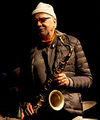
Charles Lloyd (who comes from African, Cherokee, Mongolian, and Irish lineage) has been credited with anticipating the World Music movement. As early as the late-1950s, his music has been infused with non-Western cadences and styles.
With the release of “Forest Flower” in 1966, Lloyd became one of the first jazz artists to sell a million copies. The following year, his quartet became the first jazz group to perform at San Francisco's legendary Fillmore Auditorium – popularizing contemporary jazz with the rock culture.
Native Roots of Jazz: Thelonius Monk
From KBEM | Part of the Native Roots of Jazz series | 05:00
Of Tuscarora ancestry, Thelonious Monk was one of the most inventive pianists of any musical genre.
Dubbed the “High Priest of Bebop”, Monk introduced harmonic innovations that were fundamental to the development of modern jazz.
- Playing
- Native Roots of Jazz: Thelonius Monk
- From
- KBEM

Famous for his unique phrasing and economy of notes, Thelonius Monk had a distinctly quirky and percussive sound, contemporizing the stride piano style with bebop.
As a composer, Monk created a new architecture for his music. Rather than writing new melodic lines over popular chord progressions, he composed music in which harmony and rhythm melded seamlessly with the melody.
Native Roots of Jazz: Charlie Parker
From KBEM | Part of the Native Roots of Jazz series | 05:00
A leading figure in the development of bebop, Charlie Parker (of Choctaw ancestry), is regarded as the greatest saxophonist of all time.
- Playing
- Native Roots of Jazz: Charlie Parker
- From
- KBEM
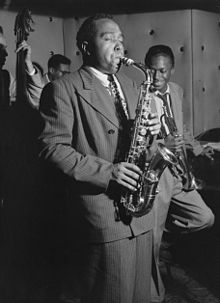
Charlie Parker brought jazz into a new era with his innovative approach to improvisation which was based on chords rather than melody. Revolutionary at the time, the harmonic ideas Parker introduced to the jazz language have now become commonplace.
Parker was one of the most significant and influential people in jazz. Miles Davis once said that the story of jazz could be told in four words: “Louis Armstrong. Charlie Parker.”
Native Roots of Jazz: Jim Pepper
From KBEM | Part of the Native Roots of Jazz series | 05:00
The son of a Creek mother and Kaw father, saxophonist Jim Pepper grew up surrounded by the songs and dances of inter-tribal powwows.
Pepper was a pioneer in fusion jazz during the 1960's with his band, The Free Spirits, being the first to combine rock and jazz.
- Playing
- Native Roots of Jazz: Jim Pepper
- From
- KBEM

Encouraged by Ornette Coleman and Don Cherry, Jim Pepper began experimenting with mixing Native American music and jazz. His most famous tune, “Witchi Tai To” (which has been covered by countless jazz, pop, folk and “world music” musicians) is based on a Native American peyote ritual chant he learned from his grandfather.
Pepper had a soulful and penetrating sound, conveying an emotion of intense spirituality.
And his style influenced other saxophonists, including Jan Garbarek, David Sanborn, Michael Brecker, Dave Liebman, and Joe Lovano.
Native Roots of Jazz: Oscar Pettiford
From KBEM | Part of the Native Roots of Jazz series | 05:00
Oscar Pettiford (whose mother was full-blooded Choctaw and father, half Cherokee) was one of the top bassists during the 1940's and 50's.
- Playing
- Native Roots of Jazz: Oscar Pettiford
- From
- KBEM
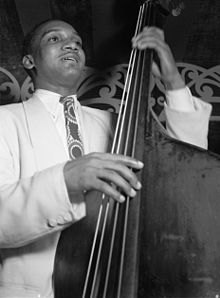
In addition to establishing and extending the melodic and solo potential of the bass during the bebop era, Oscar Pettiford is credited with introducing the cello as a solo instrument within the jazz setting.
In a letter published in Downbeat Magazine after his death, Pettiford's widow Jacqueline wrote: “...Pettiford was exposed at an early age to Indian ceremonial music and dance, and he contended that the importance of the American Indian to jazz has been underestimated if not completely overlooked. He maintained that the 4/4 tempo, ...came directly from the American Indian; that, though it existed in European music, it was not used in the same way; and that African rhythms, ...were of very different rhythmic nature.”
Native Roots of Jazz: Max Roach
From KBEM | Part of the Native Roots of Jazz series | 05:00
Best known as a bebop player, Max Roach (of Tuscarora ancestry) was named a National Endowment of the Arts Jazz Master in 1984.
- Playing
- Native Roots of Jazz: Max Roach
- From
- KBEM

Influenced by drummer Kenny Clarke, Max Roach developed an unconventional approach to the drum set establishing himself among the most imaginative and the most influential drummers in modern jazz. Instead of keeping time with the bass drum, as swing drummers did, he kept time on the ride cymbal, creating a lighter, more propulsive feel, and providing him space to create elaborate rhythmic accompaniment.
He saw his role not just as a supporting player but as a full-fledged member of the front line. By paying as much attention to the song's melody as to its beat, Roach was able to interact with fellow musicians in an open-ended conversation while maintaining a rock-solid pulse.
Native Roots of Jazz: Pee Wee Russell
From KBEM | Part of the Native Roots of Jazz series | 05:00
Pee Wee Russell, who asserted a part-Cherokee background, stands as one of most innovative clarinet players in jazz.
- Playing
- Native Roots of Jazz: Pee Wee Russell
- From
- KBEM

A Weaving of Traditions
From KBEM | 59:00
A Weaving of Traditions is a tribute to jazz musicians with Native American roots. Bobb Fantauzzo, Native flute player, performed this concert in April of 2016. His ensemble included noted Twin Cities jazz musicians. Joining him in this performance are Lyz Jaakola, an Ojibwe singer and drummer.
- Playing
- A Weaving of Traditions
- From
- KBEM
 It is commonly held that jazz developed out of a synthesis of European and African music. However, few people are aware that jazz was also influenced by Native American music. A Weaving of Traditions is a tribute to jazz musicians with Native American roots. The concert took place on Friday, April 15, 2016 at Hamline University’s Sundin Music Hall. The concert includes music of Miles Davis, Dizzy Gillespie, Charles Mingus, Thelonious Monk and other jazz musicians with Native roots arranged for Native American style flute by Bobb Fantauzzo. Joining Bobb in this performance are Lyz Jaakola, an enrolled member of Fond du Lac band of Lake Superior Ojibwe, who returns to add traditional Anishinaabe vocals and percussion, world-class bassist Anthony Cox, virtuosic pianist Javi Santiago, and versatile drummer/percussionist Mac Santiago. Veteran saxophonist Irv Williams will be making a special guest appearance.
It is commonly held that jazz developed out of a synthesis of European and African music. However, few people are aware that jazz was also influenced by Native American music. A Weaving of Traditions is a tribute to jazz musicians with Native American roots. The concert took place on Friday, April 15, 2016 at Hamline University’s Sundin Music Hall. The concert includes music of Miles Davis, Dizzy Gillespie, Charles Mingus, Thelonious Monk and other jazz musicians with Native roots arranged for Native American style flute by Bobb Fantauzzo. Joining Bobb in this performance are Lyz Jaakola, an enrolled member of Fond du Lac band of Lake Superior Ojibwe, who returns to add traditional Anishinaabe vocals and percussion, world-class bassist Anthony Cox, virtuosic pianist Javi Santiago, and versatile drummer/percussionist Mac Santiago. Veteran saxophonist Irv Williams will be making a special guest appearance.
Bobb Fantauzzo explores the Native Roots of Jazz in A Weaving of Traditions.
From KBEM | 05:00
It is commonly held that jazz developed out of a synthesis of European and African music. However, few people are aware that jazz was also influenced by Native American music. Bobb Fantauzzo, Native Flute player, explores these connections.
- Playing
- Bobb Fantauzzo explores the Native Roots of Jazz ...
- From
- KBEM
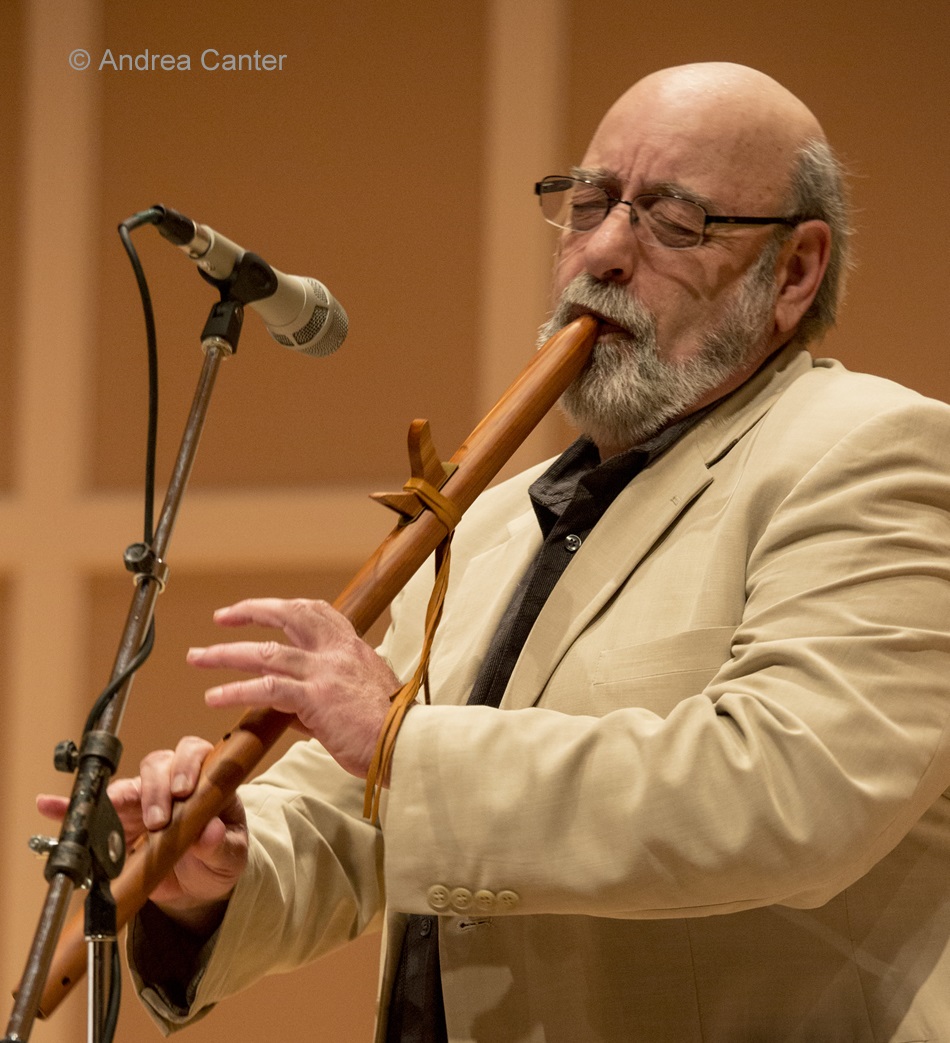 Twin Cities Weekend is a five minute feature that keeps listeners up to date on what's happening the following weekend. The show combines artist interviews and music, and helps listeners make entertainment choices.
Twin Cities Weekend is a five minute feature that keeps listeners up to date on what's happening the following weekend. The show combines artist interviews and music, and helps listeners make entertainment choices.
A Weaving of Traditions 2017
From KBEM | 58:35
Bobb Fantauzzo, playing Native style flute, leads a stellar group in the third “A Weaving of Traditions” concert recorded in front of a live audience at the Minnesota History Center in St. Paul, MN.
- Playing
- A Weaving of Traditions 2017
- From
- KBEM

It is commonly held that jazz developed out of a synthesis of European and African music. However, few people are aware that jazz was also influenced by Native American music. A Weaving of Traditions honors jazz musicians with Native roots, including Thelonious Monk (Tuscarora), Miles Davis (Cherokee), and Dave Brubeck (Modoc), among others.
Fantauzzo, on Native American style flute, is backed by virtuosic pianist Javi Santiago, who won the Schubert Club Jazz Piano Scholarship Competition in both 2006 and 2007 and performed with The Brubeck Institute Jazz Quintet in 2008 and 2009; versatile drummer/percussionist Mac Santiago, who has toured with Badfinger and performed in the pit orchestras of the Guthrie Theater and the Minnesota Opera as well as with the likes of Grover Washington Jr. and Doc Severinsen; and Jeff Bailey, the Department Head of Bass at McNally Smith College of Music, who has performed in a wide variety of musical settings as a musician, composer, and producer.
Adding traditional Anishinaabe vocals and percussion is Lyz Jaakola, an enrolled member of Fond du Lac band of Lake Superior Ojibwe.
A Weaving of Traditions is made possible through funding provided by the Minnesota Legacy Amendment Arts and Cultural Heritage Fund.
Minnesota Jazz Legends: The Elders 2017
From KBEM | Part of the Minnesota Jazz Legends: The Elders series | 01:57:10
Patty Peterson hosts this two hour broadcast honoring the pioneers of Minnesota jazz.
- Playing
- Minnesota Jazz Legends: The Elders 2017
- From
- KBEM
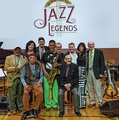
Join Patty Peterson in honoring our jazz pioneers. The broadcast of Minnesota Jazz Legends: The Elders concert, recorded live at the Minnesota History Center in May is now available on demand.
Patty Peterson reminisces with several Twin Cities jazz legends, who have achieved local and national acclaim, including Carei Thomas (piano), Steve Blons (guitar), Dean Brewington (sax), George Avaloz (drums/vocals), Betty Palmer (vocals), and Bill Evans and Charlie DeVore, both from The Hall Brothers Band.
These Jazz Legends are accompanied by the Phil Aaron Trio, featuring Phil Aaron (piano), Gary Rayor (bass) and Phil Hey (drums). Donald Washington joins Carei Thomas on his set. You'll hear these jazz legends play music they love, and discuss how their individual journeys have become the musical history of Minnesota.
The Jazz Image Minnesota Edition: Bob Rockwell
From KBEM | Part of the The Jazz Image Minnesota Edition series | 04:59
Leigh speaks with tenor saxophone titan Bob Rockwell when Bob was visiting from his home in Copenhagen Denmark. He and Leigh talk about how he got to Copenhagen and the differences between the U.S. and Europe jazz scenes.
- Playing
- The Jazz Image Minnesota Edition: Bob Rockwell
- From
- KBEM

Leigh speaks with tenor saxophone titan Bob Rockwell when Bob was visiting from his home in Copenhagen Denmark. He and Leigh talk about how he got to Copenhagen and the differences between the U.S. and Europe jazz scenes.
The Jazz Image Minnesota Edition: Eddie Berger
From KBEM | Part of the The Jazz Image Minnesota Edition series | 05:03
Eddie Berger was the "King of Bebop" in the Twin Cities Jazz scene. Leigh Kamman interviews Eddie, and features his music.
- Playing
- The Jazz Image Minnesota Edition: Eddie Berger
- From
- KBEM
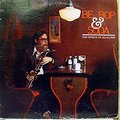
Leigh interviews saxophonist Eddie Berger who became the “King of Bebop” in the Minneapolis – St. Paul jazz scene after he settled there in the 1960’s. He shares his story about how he got hooked on that style of music after hearing Charlie Parker records for the first time.
The Jazz Image Minnesota Edition: Irv Williams
From KBEM | Part of the The Jazz Image Minnesota Edition series | 04:58
Leigh Kamman interviews "Mr. Smooth", Irv Williams.
- Playing
- The Jazz Image Minnesota Edition: Irv Williams
- From
- KBEM

Irv Williams talks to Leigh about his beginnings in music and how he became a tenor saxophonist. He also tells Leigh about the first time he saw Duke Ellington and the impression that the band and Johnny Hodges in particular made on him.
The Jazz Image Minnesota Edition: Jerry Rusch
From KBEM | Part of the The Jazz Image Minnesota Edition series | 04:53
Jerry Rusch is a trumpet player originally from Minnesota who became a successful sessions player in Los Angeles.
- Playing
- The Jazz Image Minnesota Edition: Jerry Rusch
- From
- KBEM
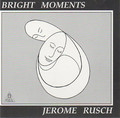
Leigh Kamman interviews trumpeter Jerry Rusch in this segment. Jerry was a great trumpet player who amassed many credits in Los Angeles recording studios after he left Minnesota. He came back to play occasionally at jazz clubs in the Twin Cities and this interview from 1992 was in conjunction with the release of his CD “Bright Moments”.
The Jazz Image Minnesota Edition: Manfredo Fest
From KBEM | Part of the The Jazz Image Minnesota Edition series | 05:06
Manfredo Fest was a legally blind bossa nova and jazz pianist and keyboardist from Brazil. He was also a bandleader, and lived in Minnesota for a period of time.
- Playing
- The Jazz Image Minnesota Edition: Manfredo Fest
- From
- KBEM
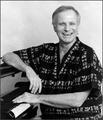
Manfredo Fest was one of the great Bossa Nova innovators in Brazil when he immigrated to Minnesota in 1965. Leigh Kamman recorded this interview in 1991 and speaks with Manfredo about his career in jazz.
The Jazz Image Minnesota Edition: Manfredo Fest
From KBEM | Part of the The Jazz Image Minnesota Edition series | 05:06
Manfredo Fest was a legally blind bossa nova and jazz pianist and keyboardist from Brazil. He was also a bandleader, and lived in Minnesota for a period of time.
- Playing
- The Jazz Image Minnesota Edition: Manfredo Fest
- From
- KBEM

Manfredo Fest was one of the great Bossa Nova innovators in Brazil when he immigrated to Minnesota in 1965. Leigh Kamman recorded this interview in 1991 and speaks with Manfredo about his career in jazz.
The Jazz Image Minnesota Edition: Mike Elliott
From KBEM | Part of the The Jazz Image Minnesota Edition series | 05:06
Mike Elliott was a guitarist who founded Natural Life in 1972, and became an important part of the jazz scene in the Twin Cities.
- Playing
- The Jazz Image Minnesota Edition: Mike Elliott
- From
- KBEM
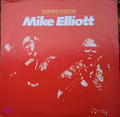
Guitarist Mike Elliott became a Minnesotan in 1965 and was soon an important part of the jazz scene in Minneapolis and St. Paul. In 1972 he founded the legendary group Natural Life and started the music room at the Longhorn Bar in Minneapolis which programmed international jazz artists for several years before becoming a rock club. Leigh conducted this interview after a gig at the Longhorn by guitarist Howard Roberts in 1975.
The Jazz Image Minnesota Edition: Percy Hughes
From KBEM | Part of the The Jazz Image Minnesota Edition series | 05:00
Percy Hughes played saxophone, and considered Johnny Hodges his role model. Percy was able to meet Johnny and exchange music with him.
- Playing
- The Jazz Image Minnesota Edition: Percy Hughes
- From
- KBEM

In this segment Leigh interviews St. Paul native and saxophonist/bandleader Percy Hughes. Percy and Leigh became friends in the 1940’s and in this interview from 1988, Percy talks about meeting and exchanging music with the great saxophonist Johnny Hodges.
The Jazz Image Minnesota Edition: Shirley Witherspoon
From KBEM | Part of the The Jazz Image Minnesota Edition series | 05:00
Singer Shirley Witherspoon found inspiration in listening to Billie Holiday and Bessie Smith.
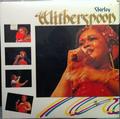
Shirley Witherspoon was a jazz and blues vocalist in Minneapolis and St. Paul who had a few gigs with Duke Ellington and became known locally for her tributes to Bessie Smith and Billie Holiday. In this interview from 2000 she tells Leigh about her first experience hearing Holliday and the influence Billie had on her own music and style.
Talkin' About Jazz: David Singley
From KBEM | Part of the Talkin' About Jazz with Joan Griffith series | 58:31
Joan talks and plays with guitarist David Singley, a seasoned jazz player in the Twin Cities area.
- Playing
- Talkin' About Jazz: David Singley
- From
- KBEM
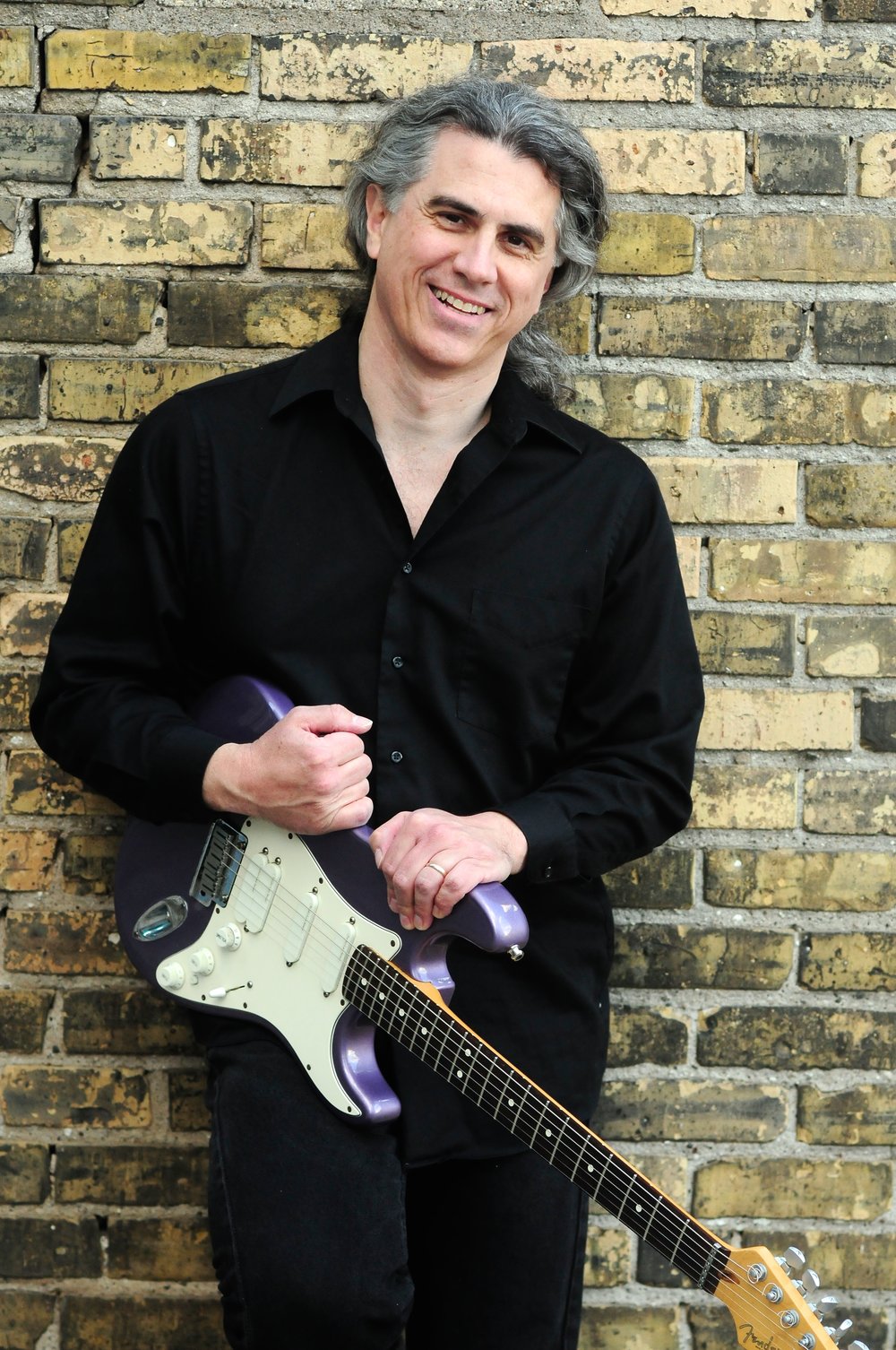
Guitarist David Singley has shared the stage with such jazz luminaries as Bob Brookmeyer, George Shearing, James Moody, Bob Mintzer, Phil Woods, Ernestine Anderson, Paquito d'Rivera, Slide Hampton, Bob Florence, Tal Farlow, and Dave Weckl.
His musical collaborations have taken him across North America appearing with Perry Como, Debbie Gibson, Gene Pitney, Idina Menzel, Mary Wells, Debbie Reynolds, Shari Lewis & Lambchop, and many others.
Working in the orchestra pit of touring Broadway musicals, he has supported live productions including Joseph and the Amazing Technicolor Dreamcoat starring Donny Osmond, The Lion King, Chicago, and If/Then.
His artistry supports a range of performances from commercial jingles to appearances with the Indianapolis Symphony Orchestra, the Minnesota Orchestra, the Minnesota Opera, The Guthrie Theater, The Childrenʼs Theater. He has also appeared on National Public Radio's A Prairie Home Companion.
David has appeared on over a dozen jazz albums recorded in the Twin Cities, and has written and produced two of his own records, How My Heart Sings (1997) and Good Hope (2016). He is also a published composer and arranger with pieces for Jazz Ensemble available in the catalogs of the Neil A. Kjos Music Co., Increase Music, and reallygoodmusic.com.
He holds a Bachelor of Music degree in Jazz Composition and Arranging from the Berklee College of Music in Boston, and a Master of Music degree in Jazz Studies from Indiana University.
Talkin' About Jazz: Chris Olsen
From KBEM | Part of the Talkin' About Jazz with Joan Griffith series | 58:30
Joan Griffith, Twin Cities musician and educator, has conversations with prominent Minnesota jazz musicians. Joan and her guests play music together, from classic standards to the artist's original compositions, and also discuss various topics throughout.
- Playing
- Talkin' About Jazz: Chris Olsen
- From
- KBEM

Chris Olson is a dedicated jazz educator as well as performer. Since earning a master’s degree in jazz studies/performance from the University of North Texas, he’s taught guitar, jazz history and improvisation as well as directing jazz ensembles at UW-Stevens Point (where he earned his undergraduate degree), Wausau Conservatory of Music, UW-Marathon County, and Inver Hills Community College. He also teaches guitar lessons and jazz combos at the MacPhail Center for Music and summer programs at the Shell Lake (WI) Arts Center; he serves on the Board of the Minnesota Guitar Society. Chris has performed with Bob Mintzer, Louis Bellson, Terry Gibbs, Ira Sullivan, and Bobby Vinton, and has appeared frequently at the Black Dog, heading his monthly “Chris Olson Project” as well as performing in other ensembles such as Framework.
Talkin' About Jazz: Geoff LeCrone
From KBEM | Part of the Talkin' About Jazz with Joan Griffith series | 56:28
Joan Griffith, Twin Cities musician and educator, has conversations with prominent Minnesota jazz musicians. Joan and her guests play music together, from classic standards to the artist's original compositions, and also discuss various topics throughout.
- Playing
- Talkin' About Jazz: Geoff LeCrone
- From
- KBEM
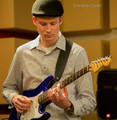
Geoff LeCrone is a versatile Twin Cities guitarist who has performed on stages large and small. From Orchestra Hall and Target Center to Bunker’s and Arnellia’s, Geoff has contributed to a wide array of musical projects. He performs regularly in ACME Jazz Company, the Andrew Walesch Big Band, the Yohannes Tona Band, and various theater productions.
Music Without Borders 2018
From KBEM | Part of the Music Without Borders series | 58:05
Music Without Boundaries is a live recording of a concert performed on April 26, 2018 at Urban Arts Academy in Minneapolis, Minnesota.
Performing on self-made hand drums, students from Urban Arts Academy join Douglas R. Ewart (didgeridoo, flutes, and other instruments), Bobb Fantauzzo (Native American style flutes), Mankwe Ndosi (vocals), Davu Seru (percussion) and Jacqueline Ultan (cello) in a unique experience celebrating the oneness of humanity through music.
- Playing
- Music Without Borders 2018
- From
- KBEM

In a world and time of differences, music has the power to bring us together, to unite us through a shared experience. Music knows no boundaries. It transcends that which keeps us apart.
Music Without Boundaries is a live recording of a concert performed on April 26, 2018 at Urban Arts Academy in Minneapolis, Minnesota.
Performing on self-made hand drums, students from Urban Arts Academy join Douglas R. Ewart (didgeridoo, flutes, and other instruments), Bobb Fantauzzo (Native American style flutes), Mankwe Ndosi (vocals), Davu Seru (percussion) and Jacqueline Ultan (cello) in a unique experience celebrating the oneness of humanity through music.
This program features music that goes beyond the boundaries of established musical genres. It's a music of texture and expression – created in the moment by improvisers listening intently to one another, feeling the music as it evolved and being open to possibilities. This program was made possible through funding provided by the Minnesota Arts and Cultural Heritage Fund.